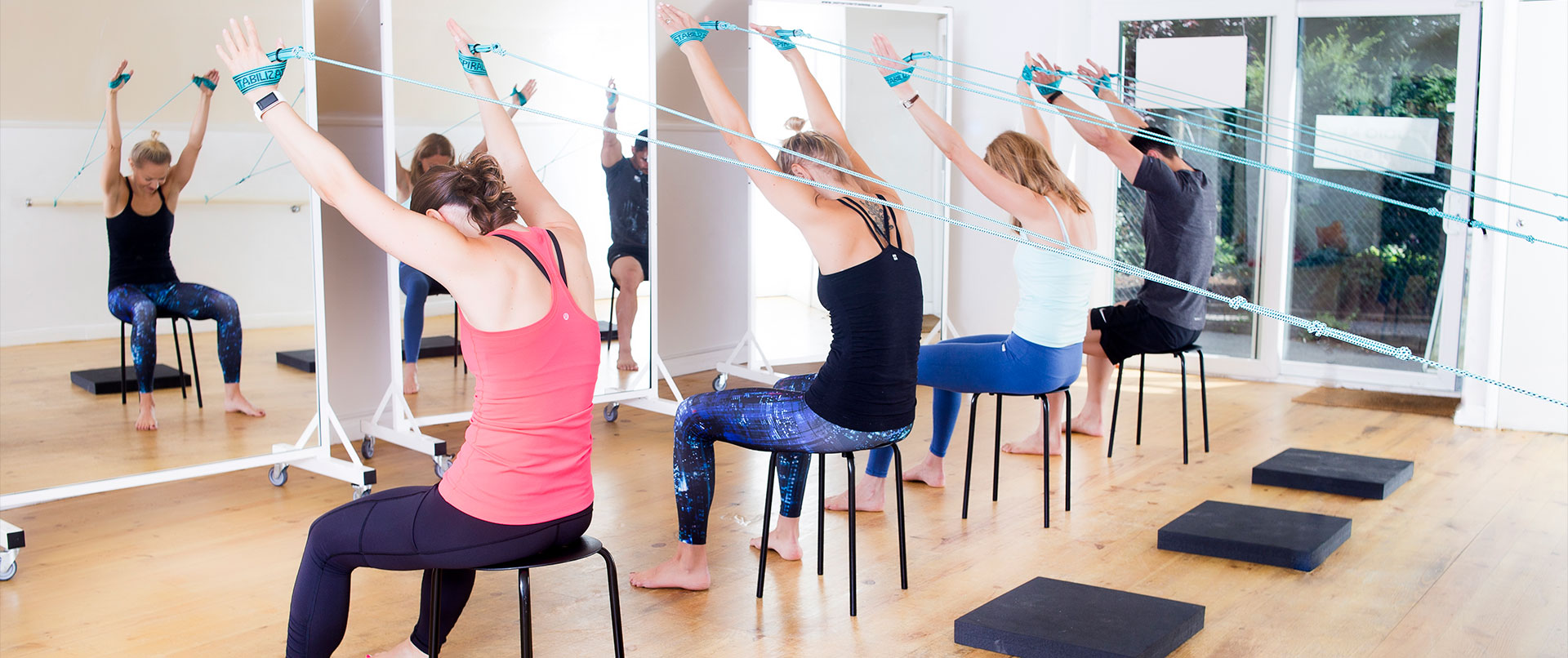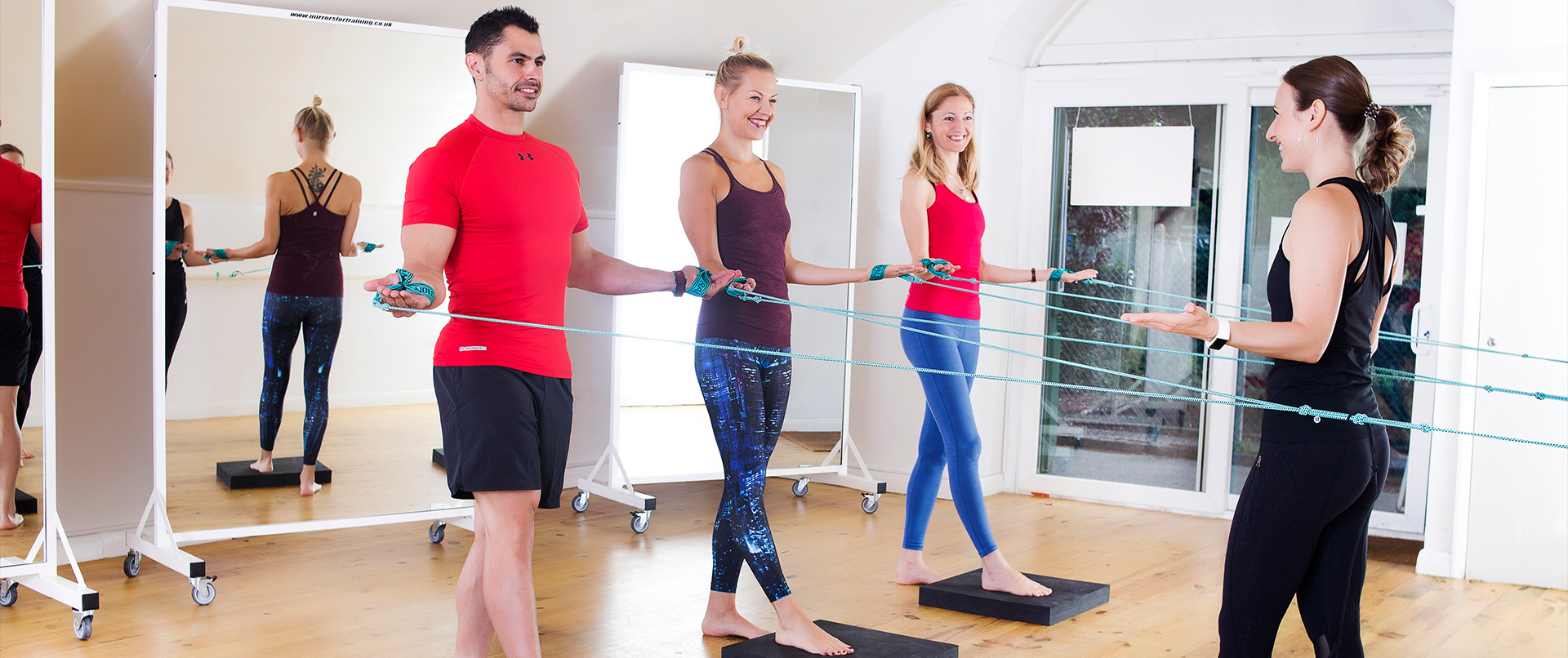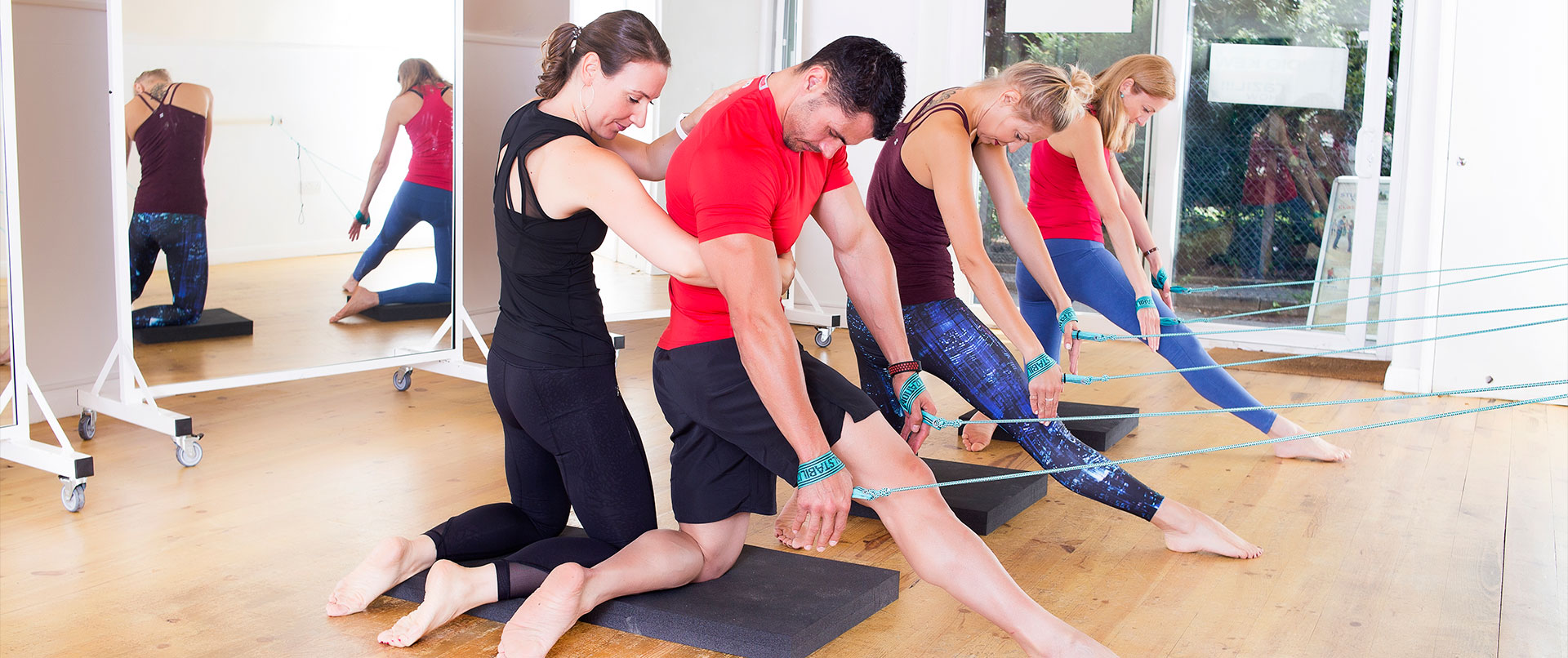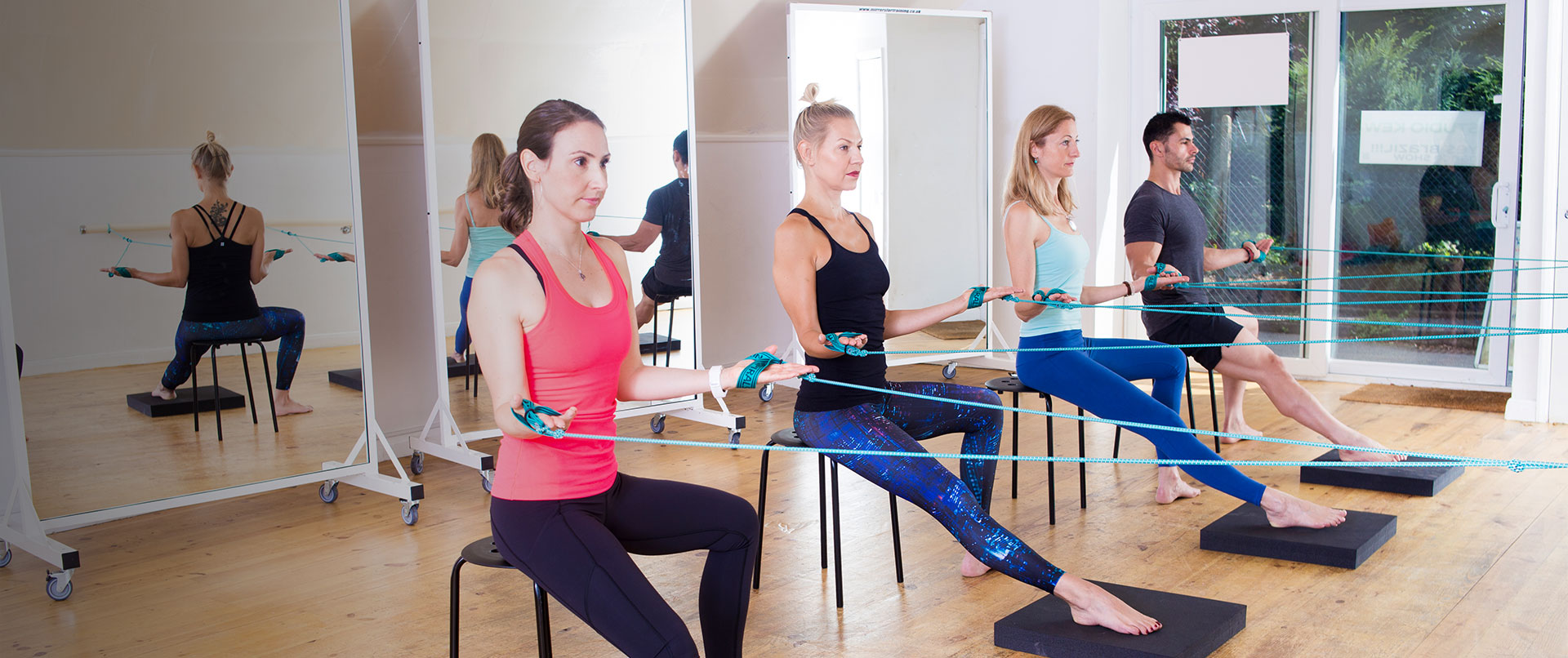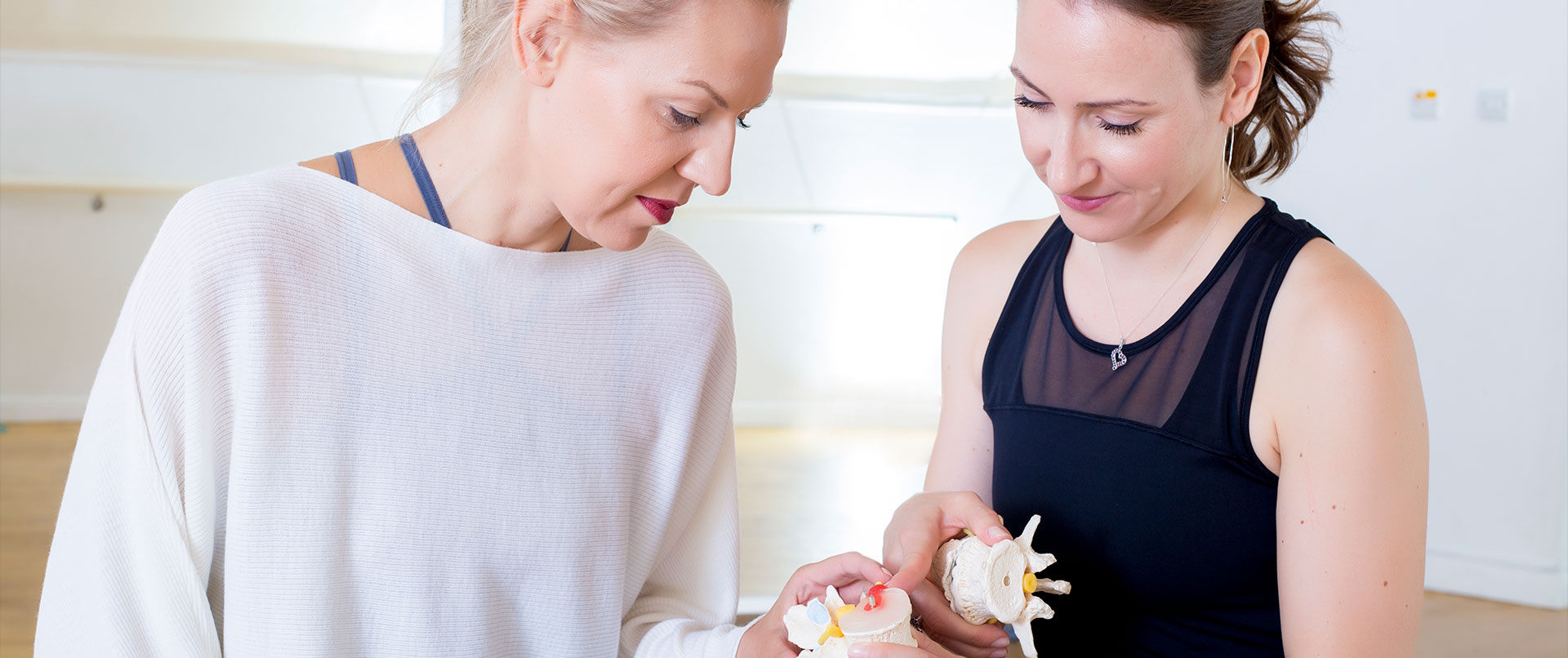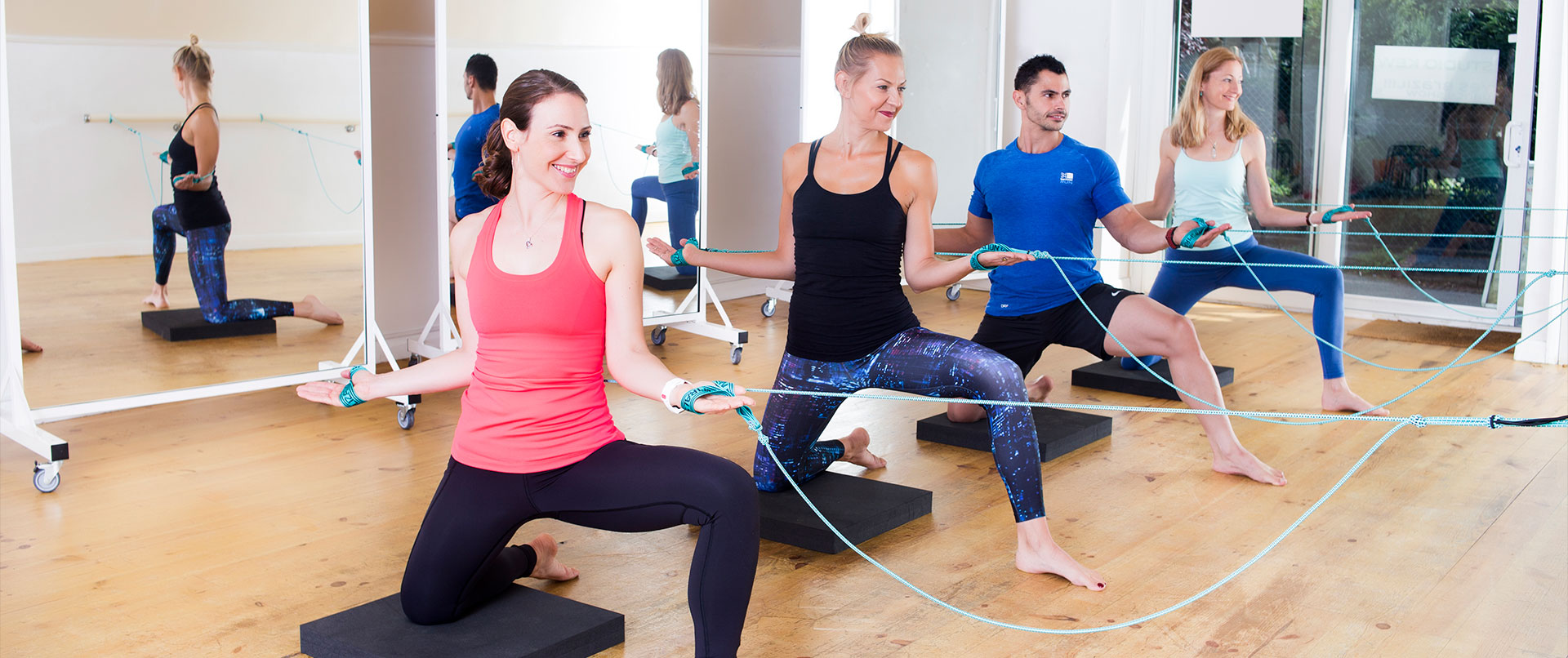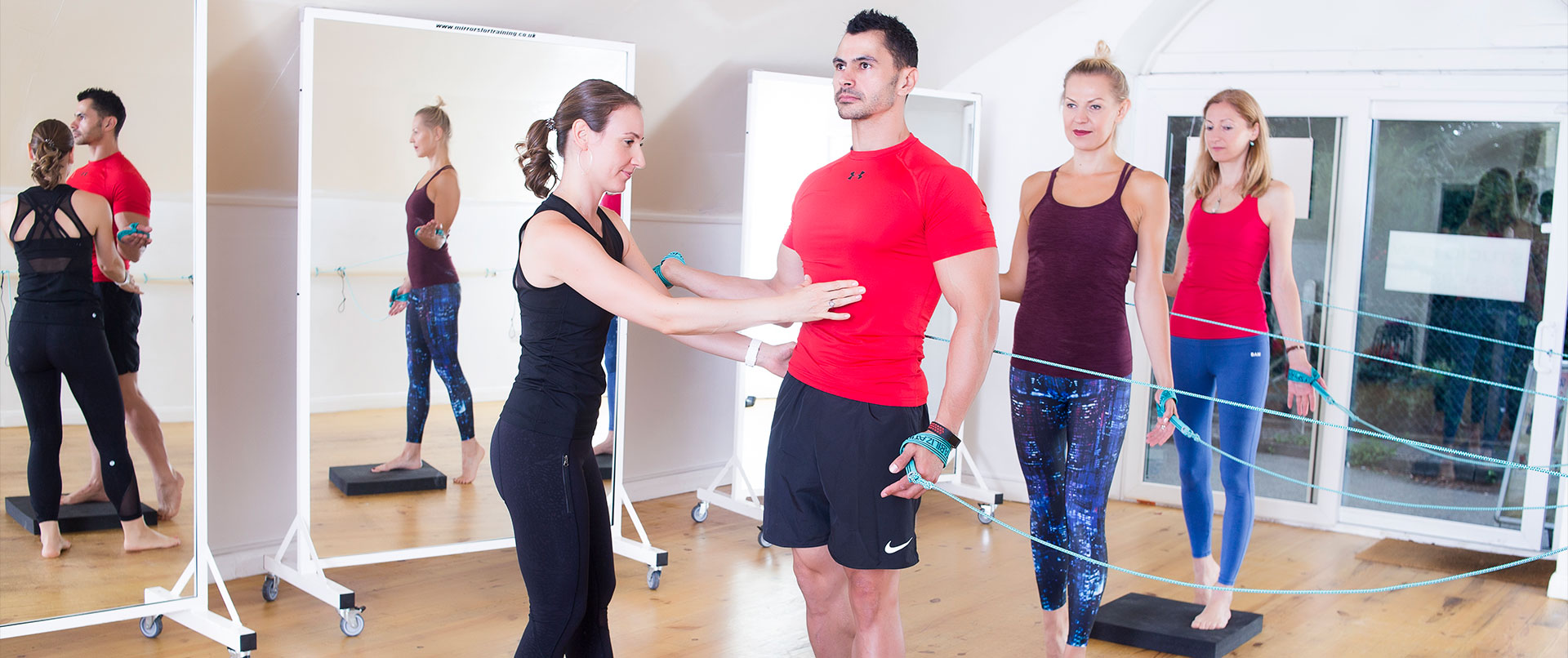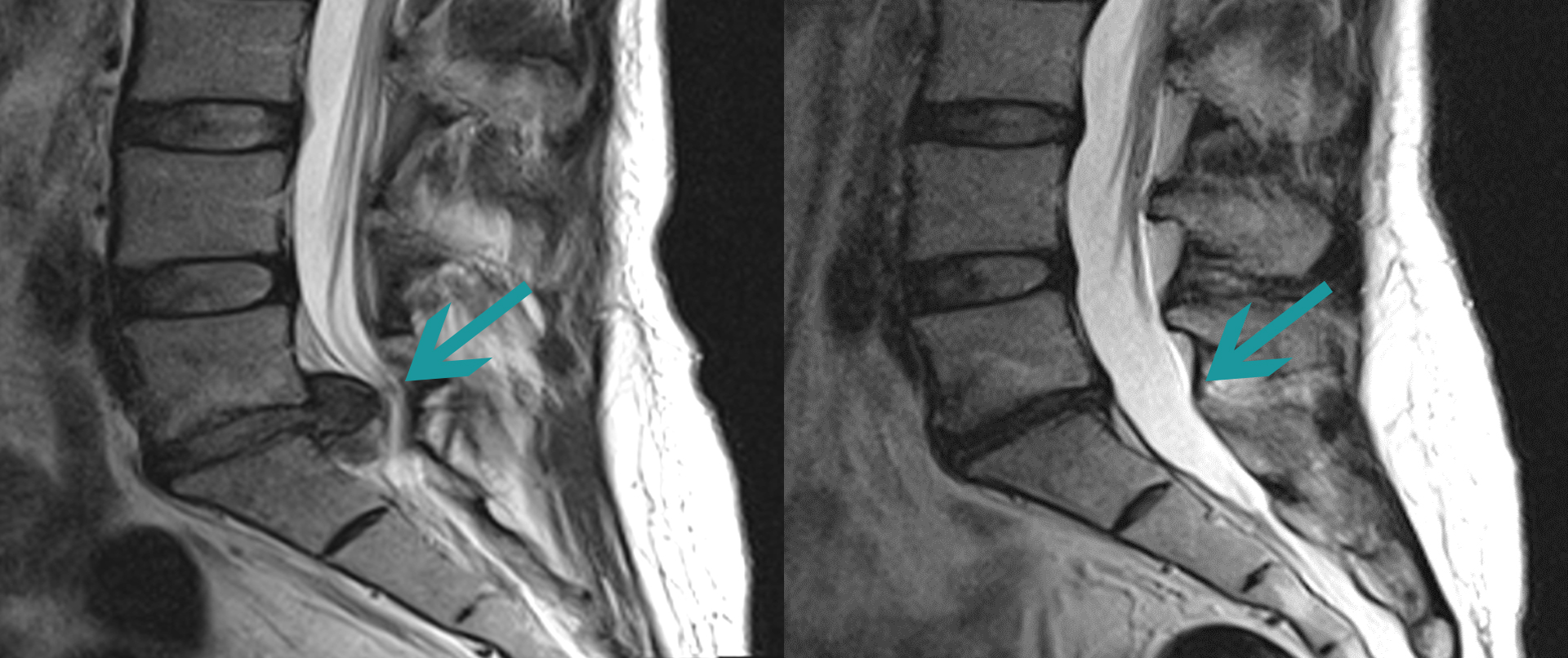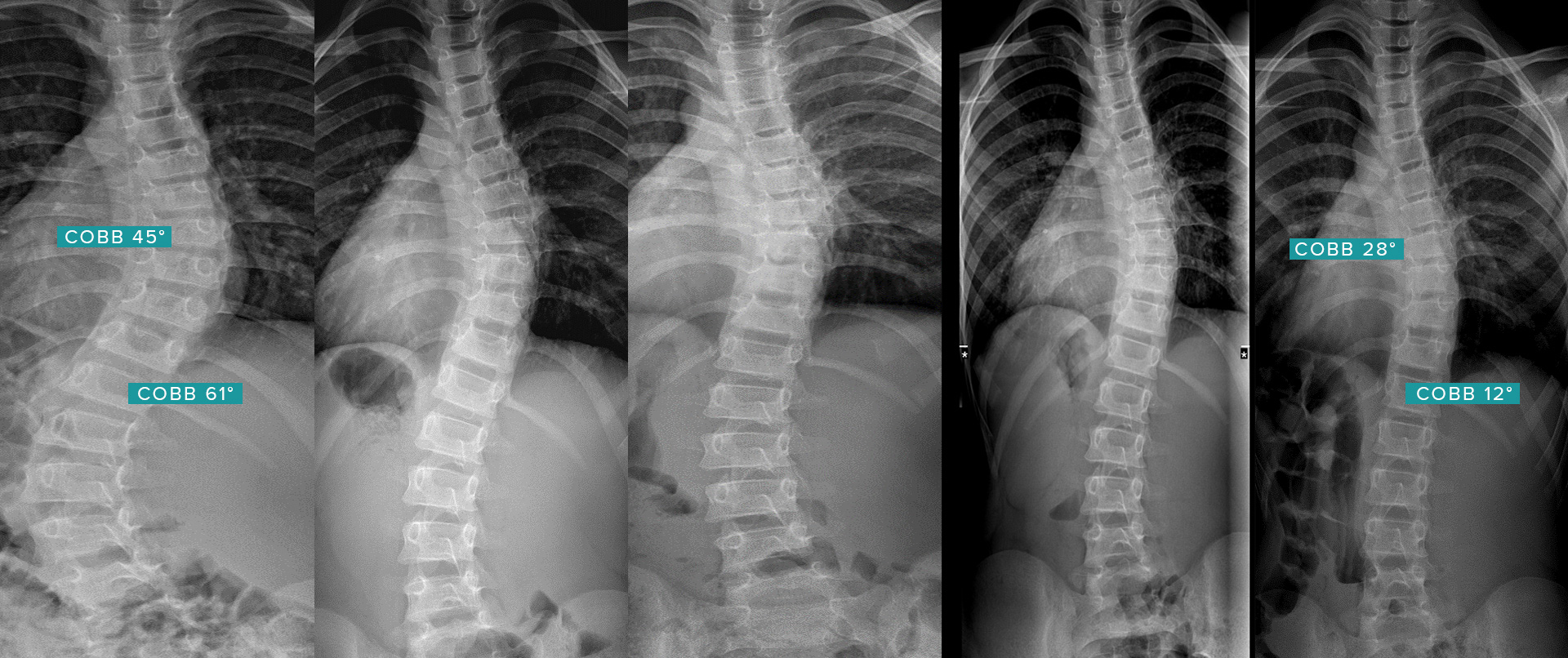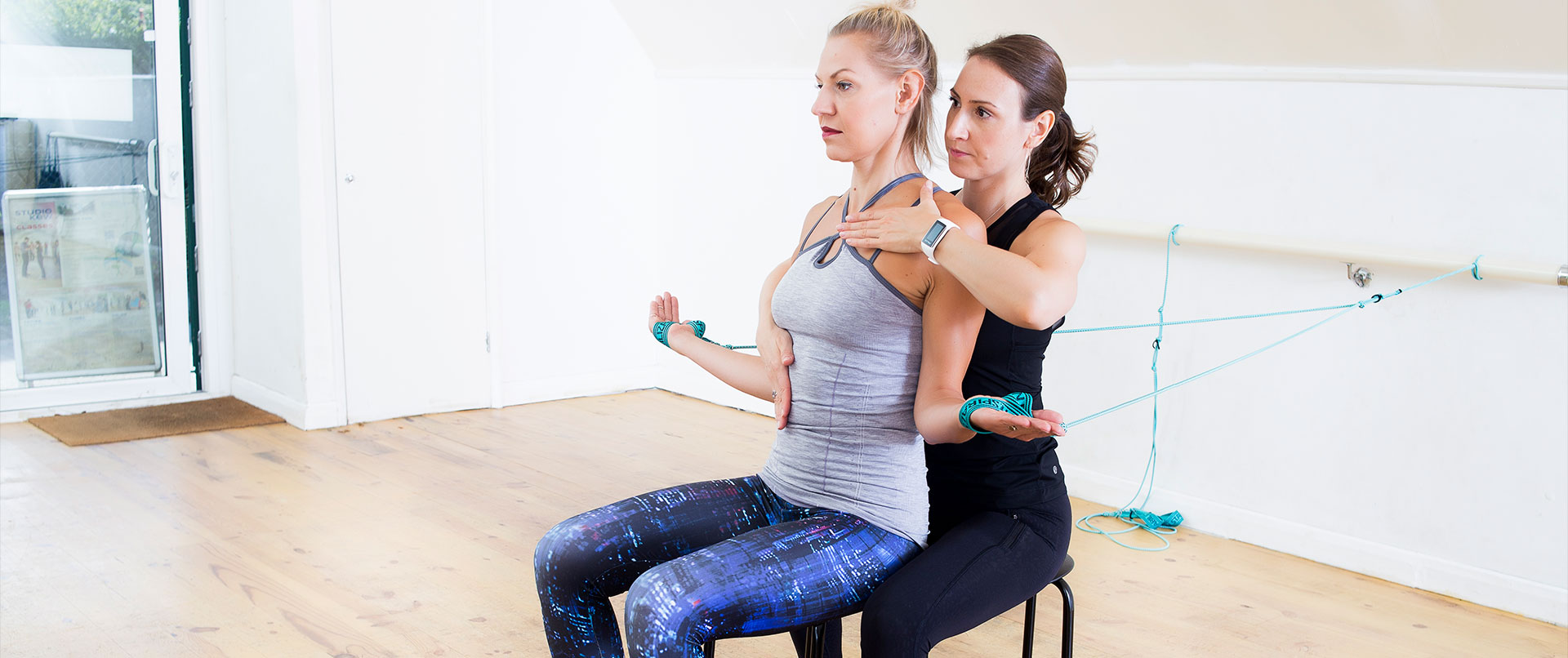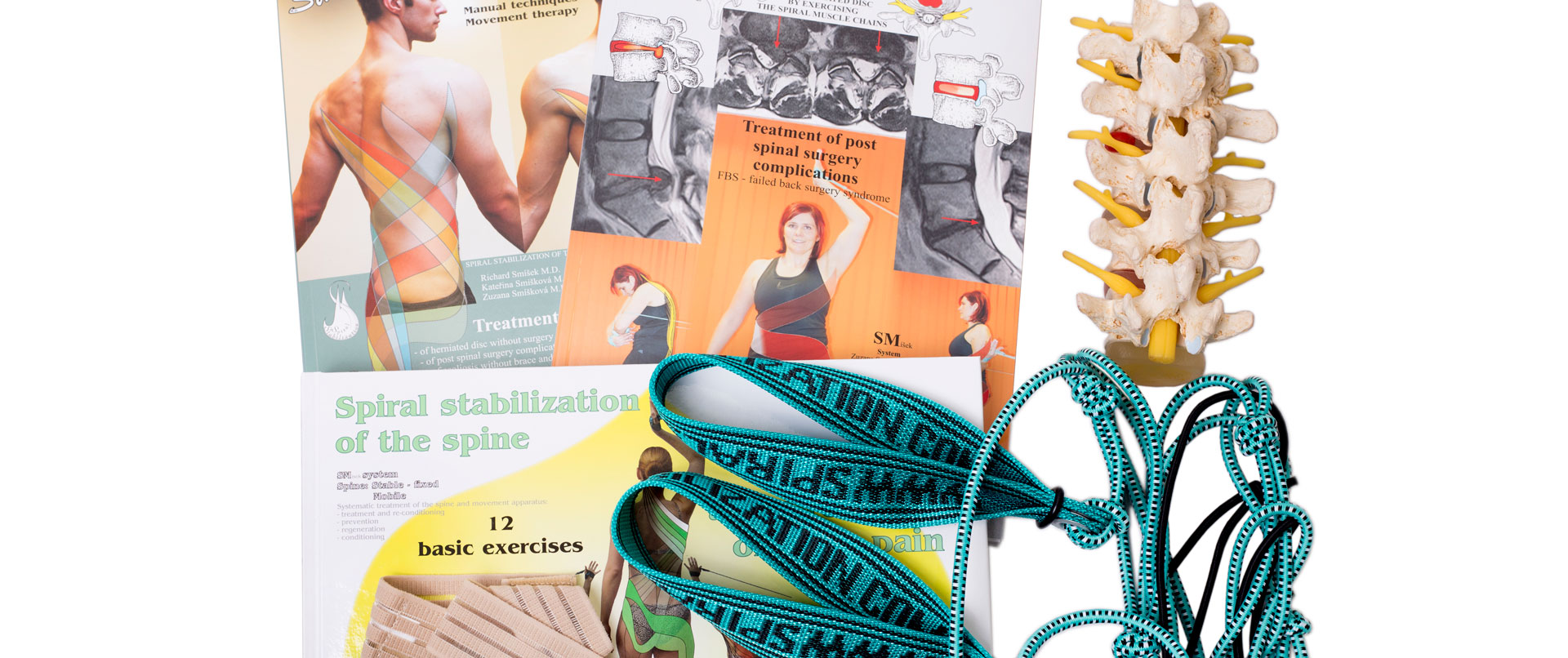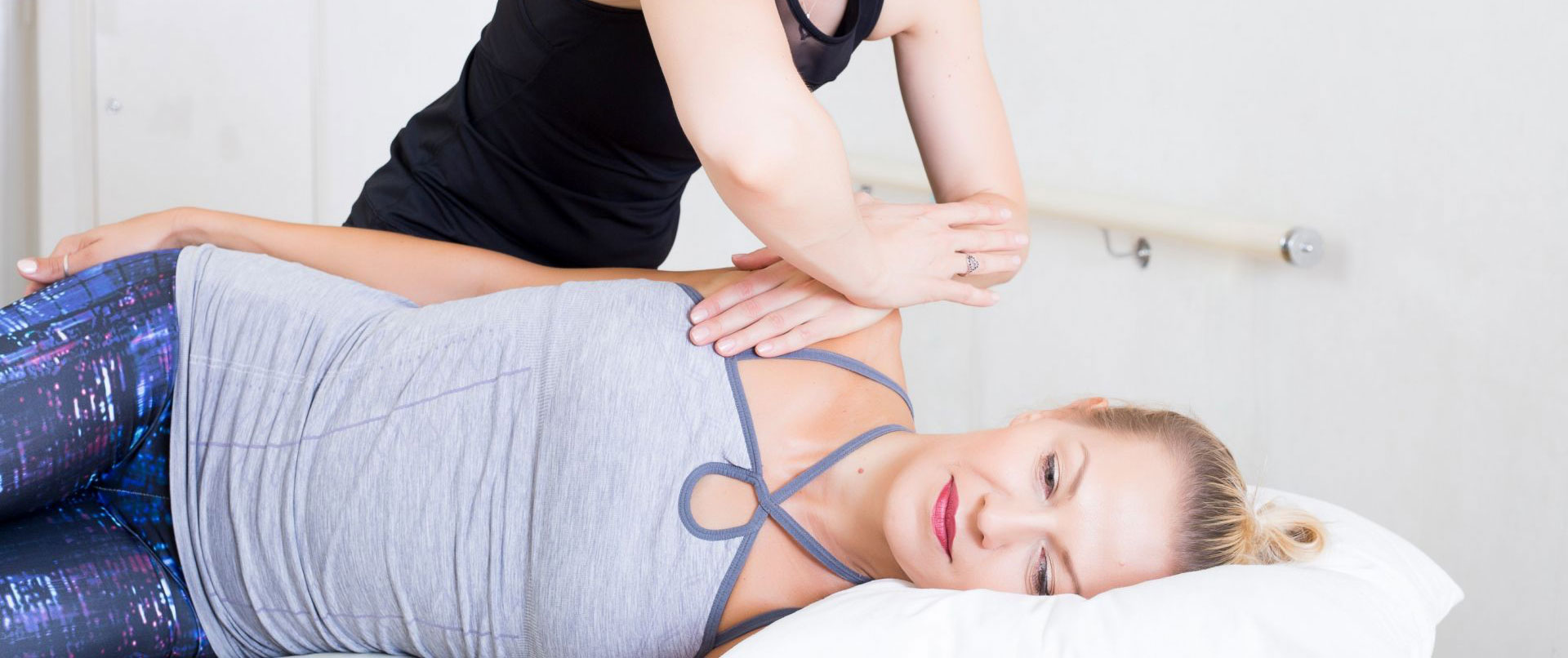Spiral Stabilization is a revolutionary exercise method invented by a Czech medical doctor. The method has proven successful in Germany for over 20 years, where treatments are paid for through medical insurance.
Spiral Stabilization is highly effective, curative and preventative. It is an extremely versatile method and it can therefore be used by anyone who wishes to improve their posture, treat back pain, prevent injuries, maintain good health and well-being or to improve sports conditioning.
Spiral Stabilization effectively and permanently treats spinal disorders and disorders in the main joints. More specifically, it treats back, neck, shoulder and hip pain, chronic pain, sciatica, disc herniation, scoliosis, lordosis, kyphosis, headaches, migraines, flat feet, hallux valgus, back pain in pregnancy and other conditions. It is a non-invasive and non-surgical treatment that achieves lasting results, especially for clients with disc herniation and scoliosis.
The method is suitable for children, adults, the elderly and athletes. Simple exercises can be comfortably performed at home or under the supervision of your therapist.
Muscle Chains
An awareness of various muscle connections within the body is required in order to understand how Spiral Stabilization treatment works. We call these muscle connections ‘muscle chains’, and divide them into two groups – vertical and spiral muscle chains.
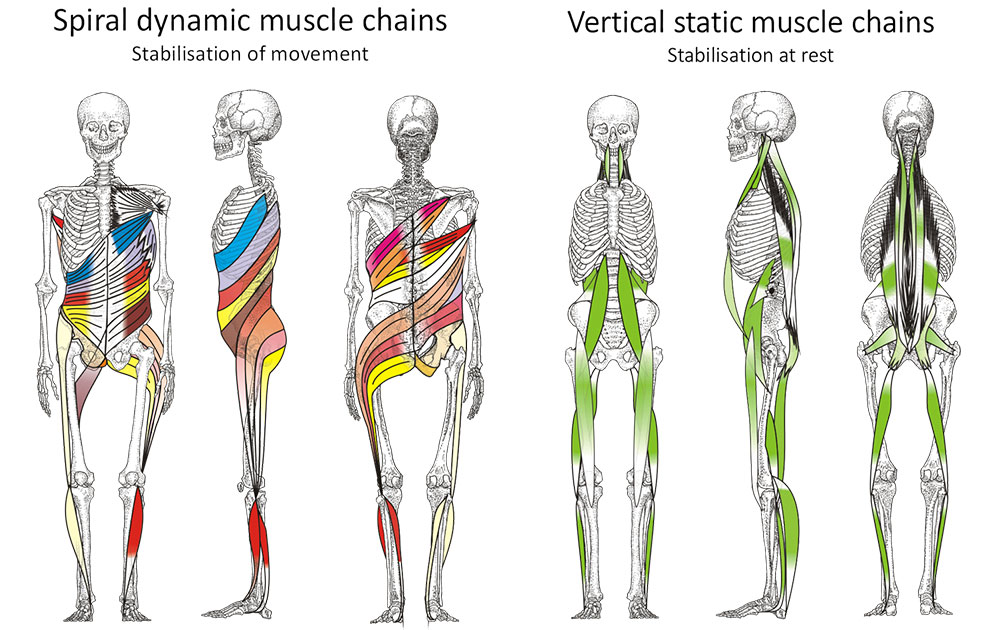
The body was originally designed to use the spiral muscle system (chains) to spirally stabilise the body during movement such as walking and running. Only in this way can the body maintain a pattern of completely natural human movement whilst regenerating the spine and the body.
The shape and function of the spine are affected by the movement of the arm and shoulder. It is the backward movement of the arm and the shoulder (also the shoulder blade) that initiates the contraction and activity of the spiral chains – mainly the muscles between the shoulder blades (latissimus and trapezius muscles) and the external and internal oblique abdominal muscles and glutes.
All this explains why Spiral Stabilization exercises require a unique spiral stabilisation of the spine during treatment. During exercise the whole body’s stabilising spiral muscles are connected together which creates a dynamic stabilising muscle corset. This corset engages the abdominal wall and narrows the waist. Contraction of spiral muscle chains help the body to develop upward strength which creates traction of the spine that relieves pressure on the intervertebral discs and joints. This allows for their nutrition, regeneration and treatment. Muscle spirals also allow for optimal spinal movement whilst aligning the spine into a central body axis.
Unfortunately, technology and inactive sedentary lifestyles hinder us from optimally coordinated movement and the correct function of spiral chains. This is caused by muscle tightness/shortening in the vertical muscle chains – mainly paravertebral muscles along the spine and hip flexors. This tightness causes flexion/bending in the joints and incorrect posture. In addition, muscle weakness causes muscle imbalances in the body that result in spinal and joint compression which, in turn, causes back pain.
Spiral Stabilization exercises eliminate those muscle imbalances. Each exercise stretches muscle tightness in vertical chains and strengthens muscle weakness in spiral chains. Strengthening of the spiral muscle chains (abdominal muscles, back muscles between the shoulder blades, glutes) creates natural spinal traction and decompression. This regenerates the spine and relieves pain.
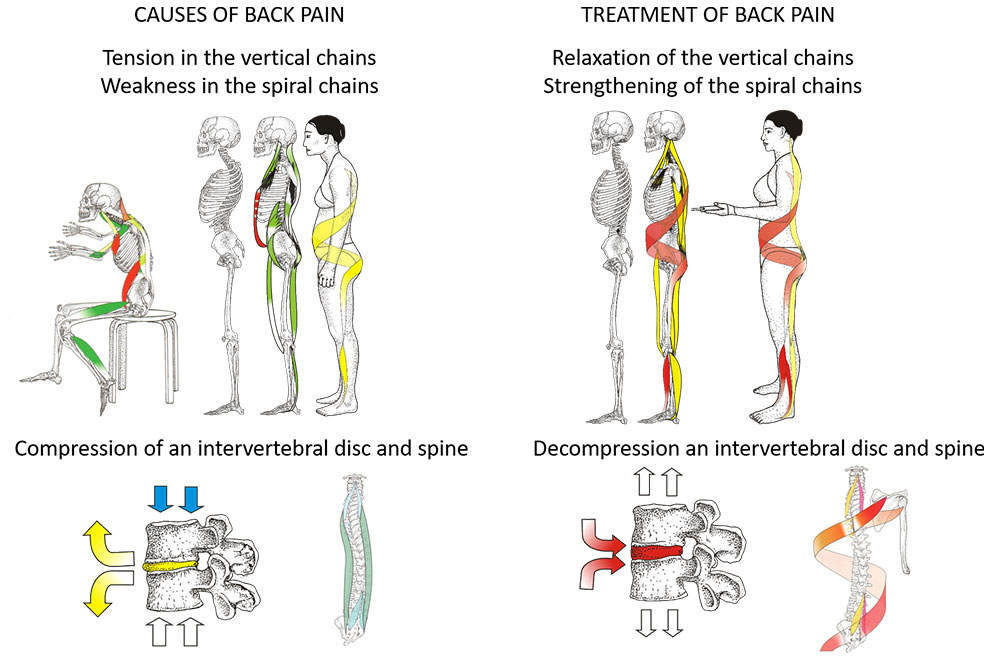
Spiral Stabilization Treatment
Spiral Stabilization exercises are performed with an elastic cord. The cord allows for extensive movement against a low, but gradually increasing, resistance that will activate the muscle chains.
The exercises can be easily learnt as they draw on the natural movement and coordination of the body regularly used during walking and running. The movement programme brings together all of the important elements of strengthening, stabilisation, stretching, relaxation, coordination and balance in every exercise.
The exercise programme is tailored to the needs of each individual client. They can exercise in sitting, standing and kneeling positions, depending on their individual abilities and health conditions.
Firstly, we perform exercises to learn the right technique, standing on both feet. We then continue by exercising on only one foot. Exercising on one foot develops a sense of balance and increases the effect of spiral stabilisation (it intensively strengthens the abdominal muscles and glutes) and supports the arch of the foot. We then progress to intermediate and advanced exercises using the Spiral Stabilization balance mat.
In order to accelerate and enhance the positive effects of the treatment, we can also use manual therapy techniques as a part of the Spiral Stabilization method. The main aim of manual therapy is to relax the tension in the vertical muscles which have hindered spiral stabilisation and optimal movement during exercise.
The techniques we use in manual therapy are soft tissue massage, which releases tensed muscles, manual stretching, post-isometric relaxation, traction and mobilisation.
There is a simple set of 11 exercises that will train all the important muscle groups and different muscle spirals. Once the exercise technique has been mastered, it will take 10-15 minutes to perform the entire exercise set, which will regenerate the spine and joints (shoulder, hip, knee, ankle).
Daily exercise at home for 10-15 minutes is recommended (after work, school, sports) in addition to regular exercise under your therapist’s supervision.
Spiral Stabilization exercises can be performed on their own or to complement your existing exercise programme (exercise class, gym session, sport), simply by including them in your warm up and cool down.
Spiral Stabilization Principles
- Vertical body axis
- Muscle balance in the girdles and trunk
- Sufficient range of motion (especially extension)
- Spiral stabilisation
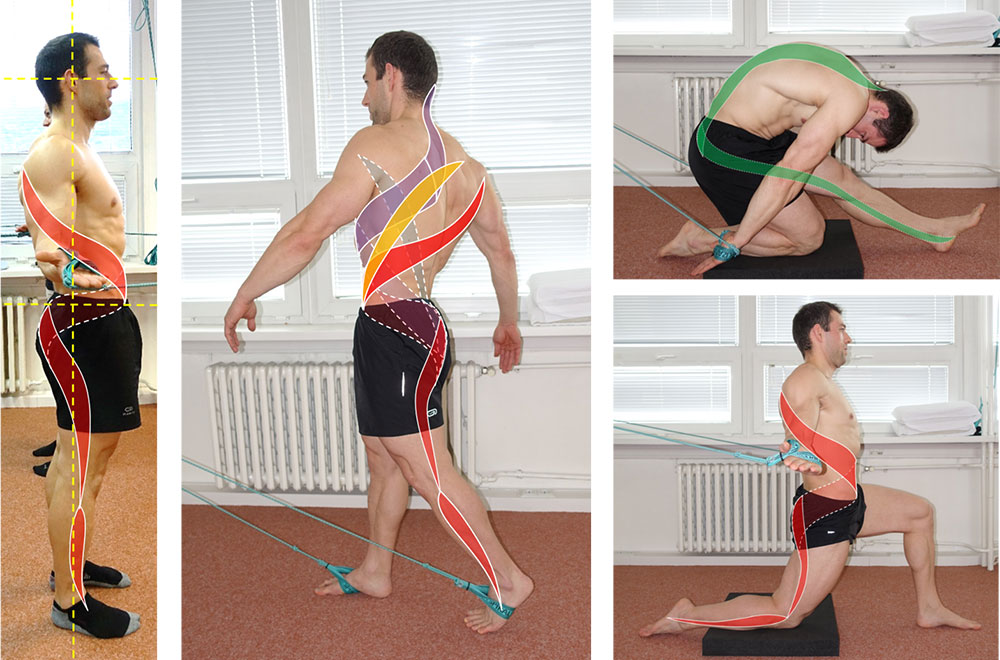
Spiral Stabilization Treatment Steps
- Strengthening of the spiral muscle chains
- Relaxation and stretching of the vertical muscle chains
- Mobilisation of the spine in rotation with traction
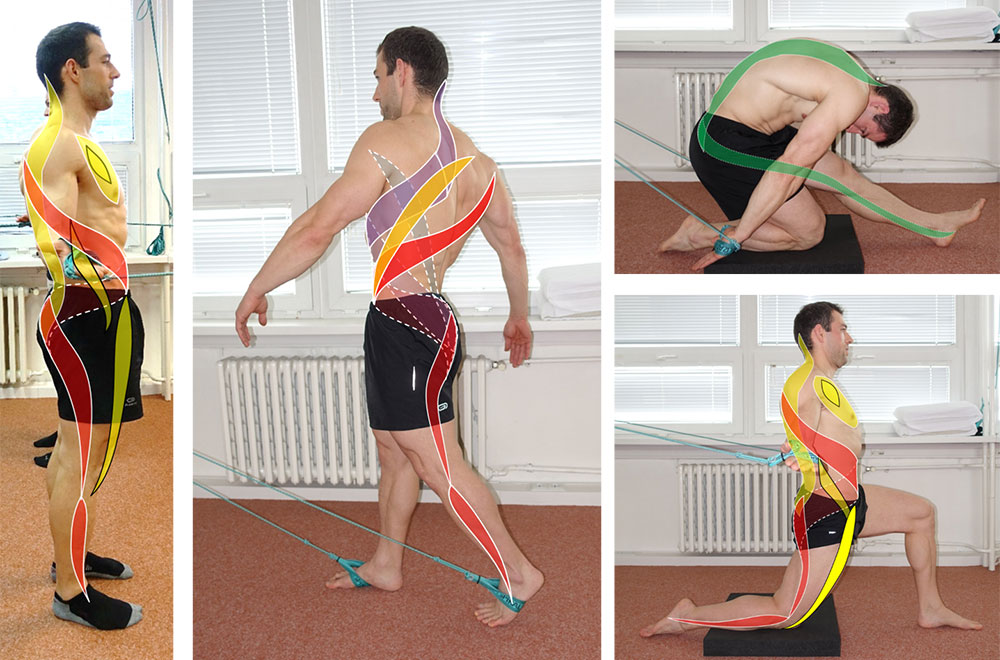
Optimal Gait Stabilisation and Coordination
Spiral Stabilization Exercises
Spiral Stabilization Manual Therapy
Thank you to the Spiral Stabilization rehabilitation clinic in Prague for the provision of some of the images on this page.
